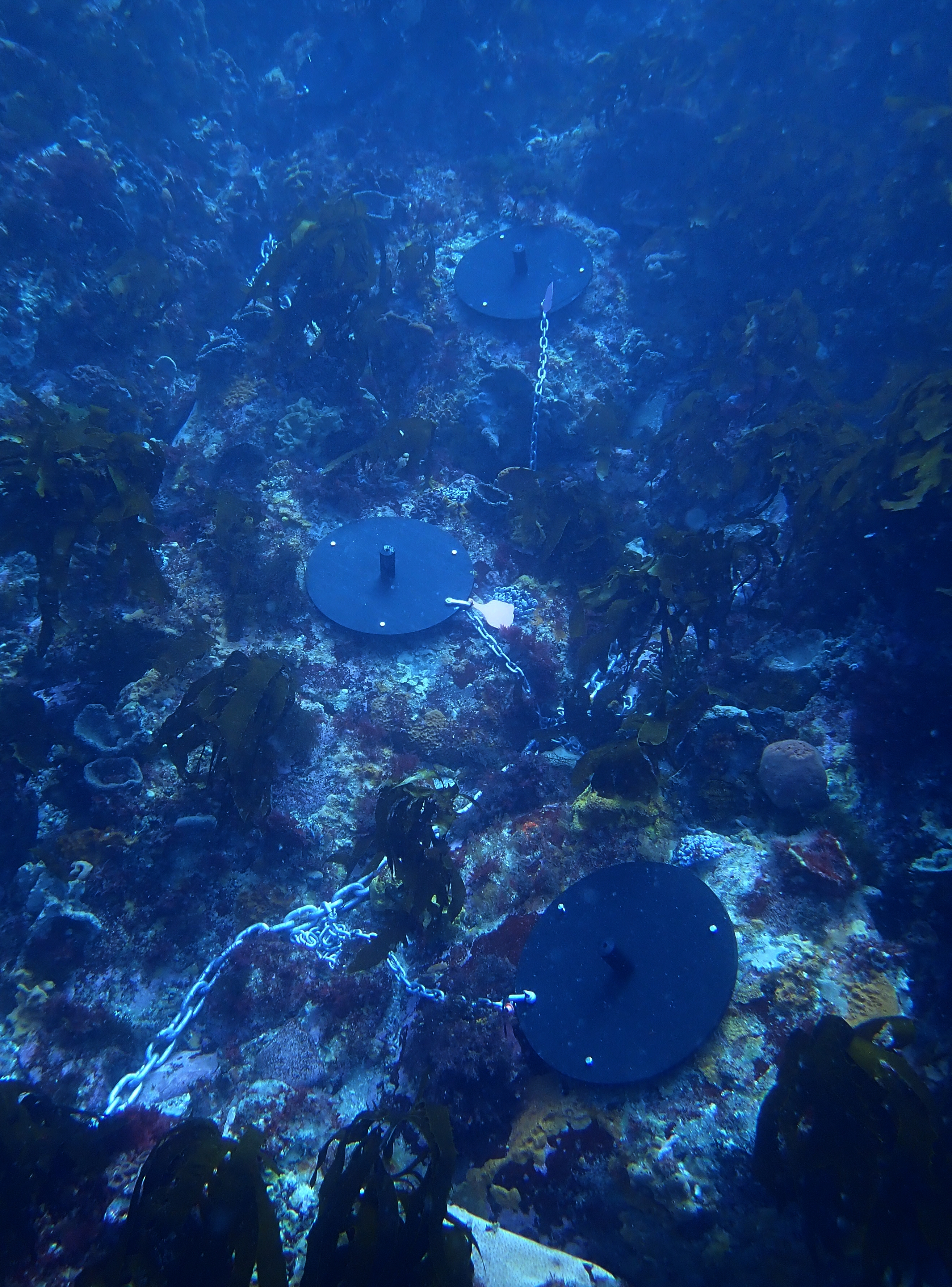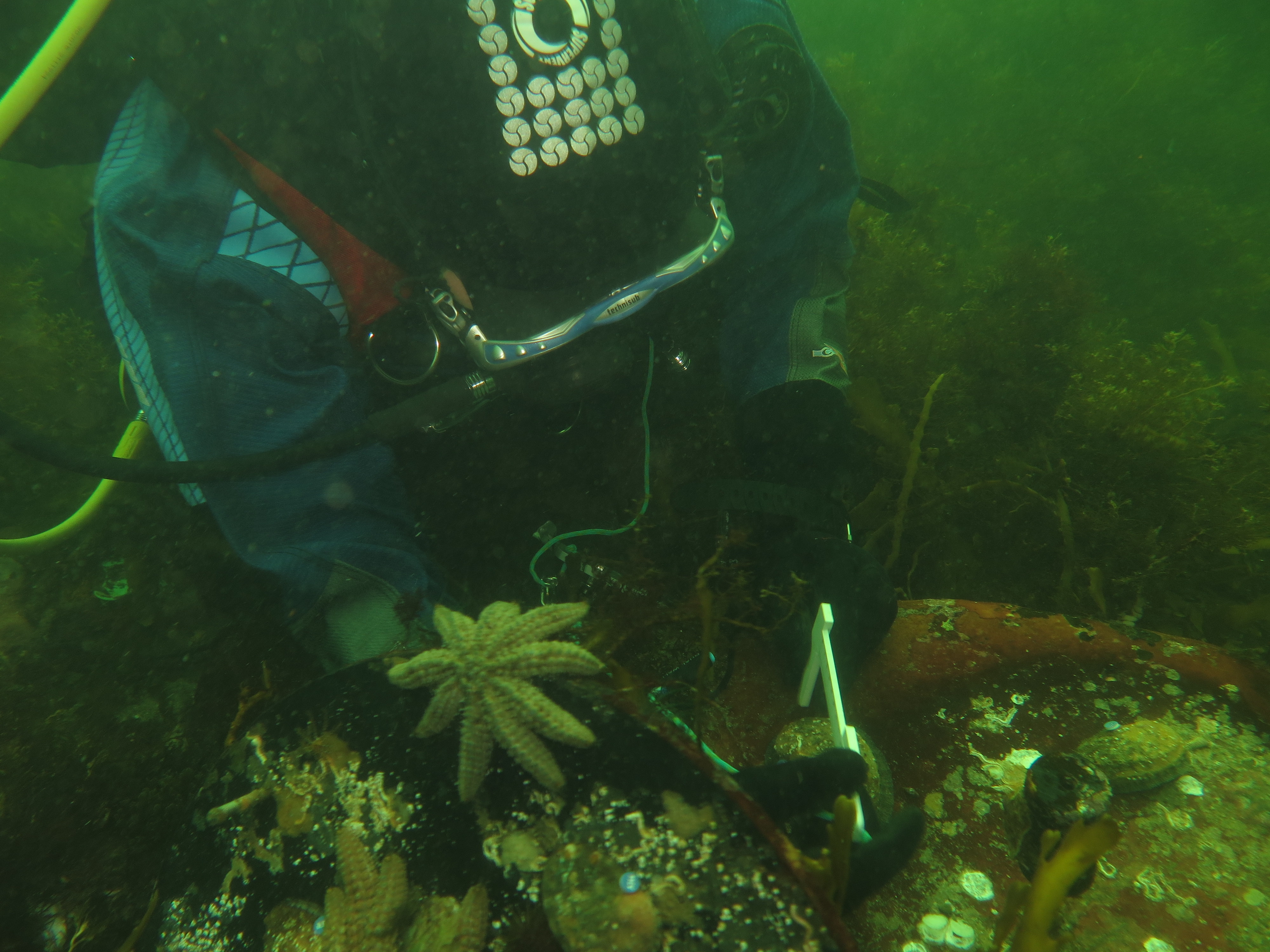Dr Jaime McAllister, Sarah Pyke, Dr Craig Mundy
IMAS have been routinely performing Fishery Independent Surveys (FIS) at several sites along the east coast of Tasmania since 2015 as part of a pilot program aimed at collecting data for juvenile abalone not represented in processor catch sampling.
 Two methods are currently used to monitor juvenile abalone. Cryptic abalone (<100mm) are monitored using an artificial habitat or abalone recruitment module (ARM) developed by IMAS.
Two methods are currently used to monitor juvenile abalone. Cryptic abalone (<100mm) are monitored using an artificial habitat or abalone recruitment module (ARM) developed by IMAS.
This consists of a flat plastic disc secured to the substrate, which creates a cryptic space underneath. Sites are surveyed seasonally, and all abalone found under the ARM are measured.
Image (right): Abalone Recruitment Modules (ARMs) secured to substrate
Sub-legal abalone (i.e. >100 mm) are monitored at the same locations as ARMs. This involves counting and measuring all emergent abalone found within a one metre band of a transect line, deployed at randomised intervals along a 60m fixed baseline.
Both ARM and LEG surveys are providing a time series of abalone density and size structure information which are being used as a relative measure of fishery performance.
Preliminary analysis of data highlights a latitudinal increase in ARM and LEG abundance towards more southern sites with recent analysis indicating abundances appear to have peaked and stabilised across at most sites.

Image (above): Measuring juvenile abalone found underneath an ARM. Note tagged juvenile abalone in foreground still attached to underside of ARM.
Publications and reports:
Tasmanian Abalone Fishery Assessment 2018
Development of a juvenile abalone monitoring method (FRDC)
Interested in this project?